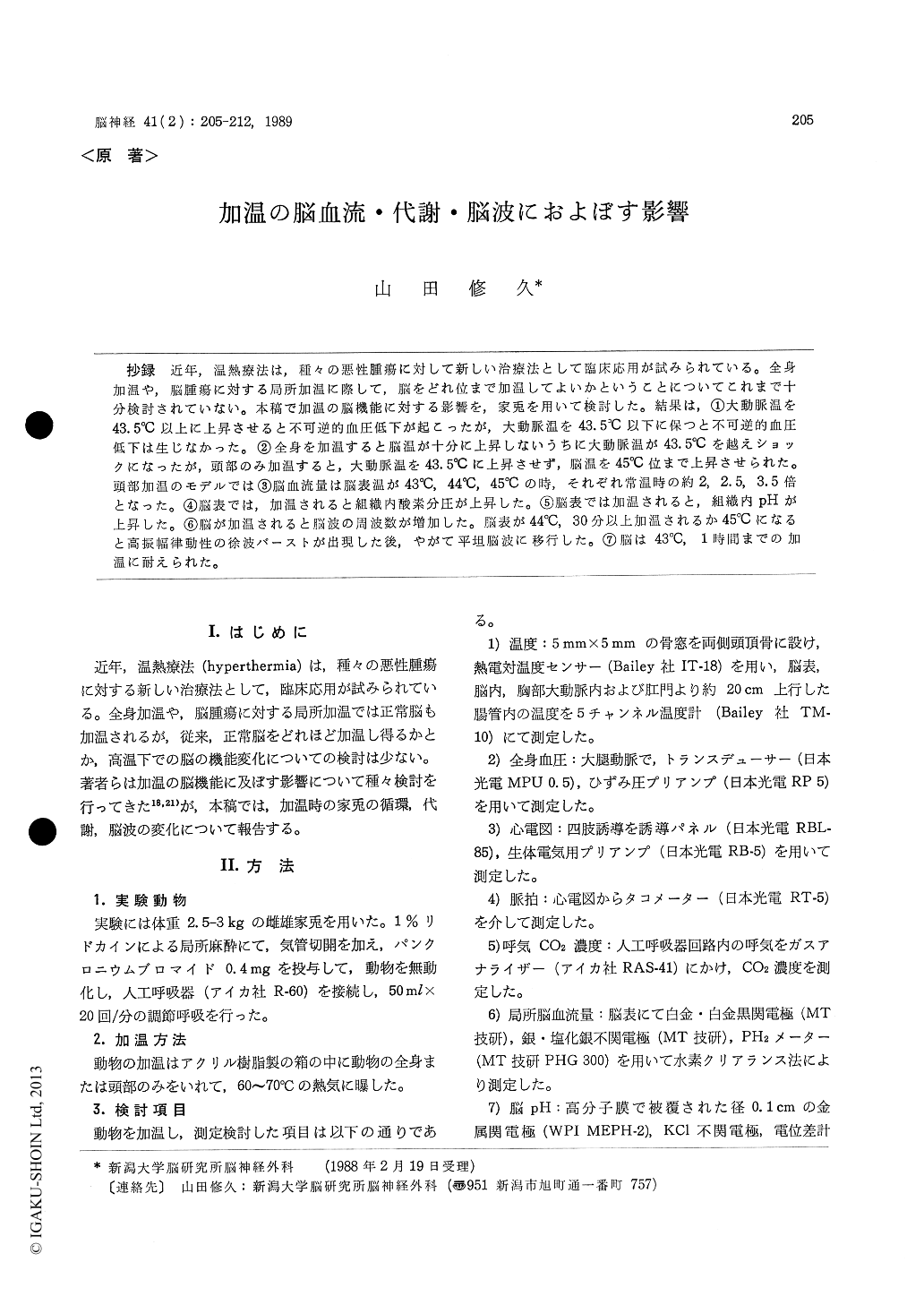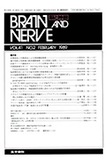Japanese
English
- 有料閲覧
- Abstract 文献概要
- 1ページ目 Look Inside
抄録 近年,温熱療法は,種々の悪性腫瘍に対して新しい治療法として臨床応用が試みられている。全身加温や,脳腫瘍に対する局所加温に際して,脳をどれ位まで加温してよいかということについてこれまで十分検討されていない。本稿で加温の脳機能に対する影響を,家兎を用いて検討した。結果は,①大動脈温を43.5℃以上に上昇させると不可逆的血圧低下が起こったが,大動脈温を43.5℃以下に保つと不可逆的血圧低下は生じなかった。②全身を加温すると脳温が十分に上昇しないうちに大動脈温が43.5℃を越えショックになったが,頭部のみ加温すると,大動脈温を43.5℃に上昇させず,脳温を45℃位まで上昇させられた。頭部加温のモデルでは③脳血流量は脳表温が43℃,44℃,45℃の時,それぞれ常温時の約2,2.5,3.5倍となった。④脳表では,加温されると組織内酸素分圧が上昇した。⑤脳表では加温されると,組織内pHが上昇した。⑥脳が加温されると脳波の周波数が増加した。脳表が44°C,30分以上加温されるか45°Cになると高振幅律動性の徐波バーストが出現した後,やがて平坦脳波に移行した。⑦脳は43°C,1時間までの加温に耐えられた。
In practice of systemic or local hyperthermia, it becomes very important to determine the tole-rance of the brain to heat, along with the evalua-tion of the influence of heat on brain function. In this little known area, the study was made by examining the changes of blood pressure, cerebral blood flow (CBF), partial pressure of oxygen and pH in the cerebral cortex, electroence-phalogram (EEG) and somatosensory evoked po-tential (SEP), under hyperthermia by experiment.
Unanesthetized and immobilized adult rabbits were used in the experiments under controlled respiration. The head alone or the whole body was heated by bathing in hot air.
In the head heating, the brain temperature could be heated up to 45℃ without extreme fall of the blood pressure, and meantime the aortic blood maintained under 43.5℃ at that condition. In the head heating case, the CBF increased to two times at 43℃, two and a half times at 44℃, three and a half times at 45℃ of thecortical temperature. As the cortical temperature raised up, the partial pressure of oxygen and pH of the cerebral cortex increased. The peak frequency of power spectrum of EEG increased as the temperature was raised. High amplitude rhythmic slow wave burst appeared at over 44°C for 30 minutes, which soon changed to a flat pat-tern.
In the whole body bathing, on the contrary, the animals died of abrupt fall of the arterial blood pressure when the temperature of the aor-tic blood was raised over 43.5℃, and it was im-possible to get the brain heated over 43℃.
These findings show that the heat can activate the brain function parallel to the increase of the temperature, and when the aortic temperature of the animals is remained under 43.5℃, the cere-bral functions can be preserved until the tem-perature of brain reaches to 44℃. In the clinical hyperthermia, however, it will be safe to keep the brain temperature less than 43℃.

Copyright © 1989, Igaku-Shoin Ltd. All rights reserved.


